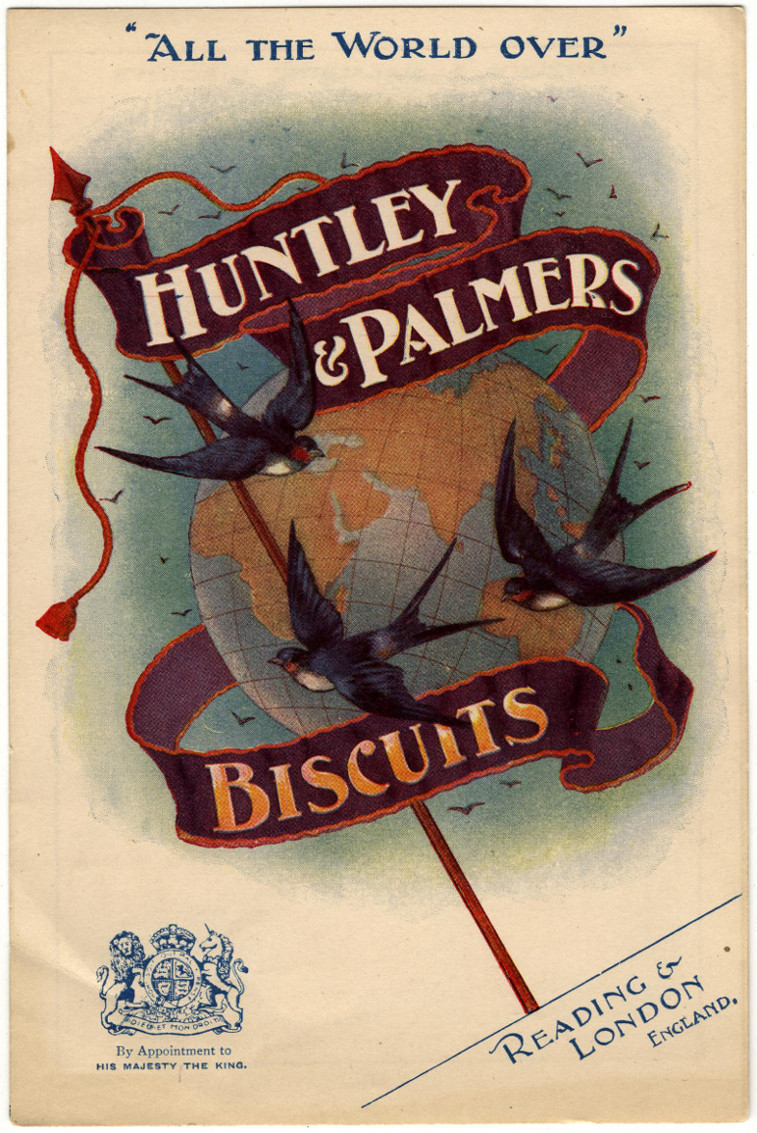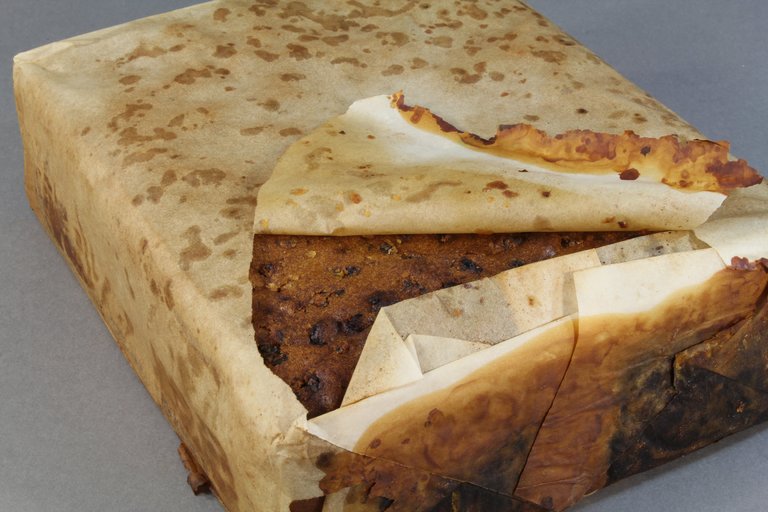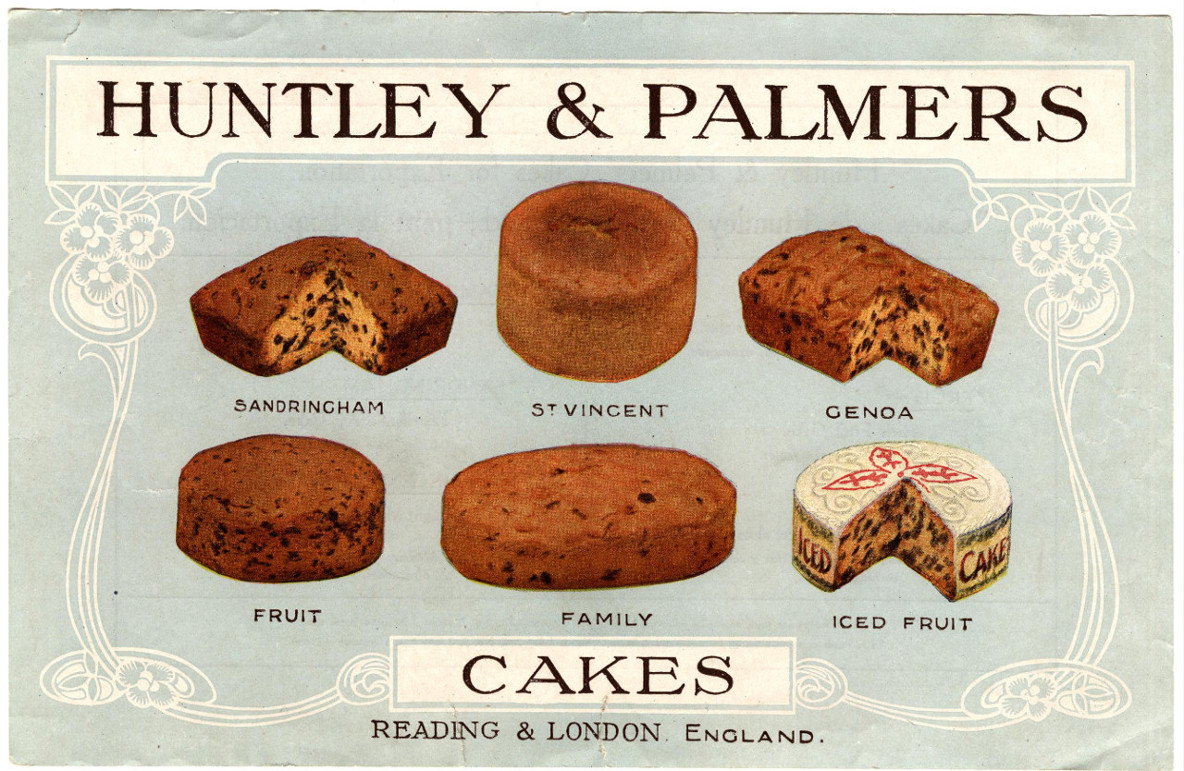Interest in Reading Museum’s collections comes from far and wide, reflecting the international profile the town has gained over the centuries. Most recently the rock festival and the football club have made Reading famous. Previously Reading was known across the globe for its beer, bulb, brick and biscuit manufacturing industries. Further back still, and throughout the medieval period, Reading Abbey was a prestigious centre for pilgrimage, well known across Christendom.
As a result of this rich heritage, Reading Museum today receives a large and varied volume of enquiries from across the world. Last month alone we responded to over 100 requests for information, including contacts from South Africa, France, Canada, Australia, and the Kingdom of Bahrain. Even by these standards however, it is not an everyday occurrence that we hear from the South Pole.

By 1900 Huntley & Palmers were the largest biscuit manufacturer in the world, exporting to Africa, the Americas and the Far East. (Museum Object Number REDMG:1997.82.164).
Francesca Eathorne, the General Manager for Operations and Communications at the Antarctic Heritage Trust wrote to us this August, explaining that researchers had recently discovered a 106 year old fruit cake made by Huntley and Palmers. It had been taken to Cape Adare in Antarctica by Captain Robert Falcon Scott’s Northern Party during their fateful attempt to be the first to reach the South Pole. The Heritage Trust conservators have been restoring Scott’s Terra Nova hut to look as it did a century ago. Each artefact - including the fruit cake – has received conservation treatment before being returned to its original location in a project that has taken over 5 years to complete.
Interest in the 'frozen-in-time' Reading-baked fruit cake has been immense, more so perhaps because conservators reported the cake so well packaged in its Reading-made Huntley-Boorne & Stevens tin container, that it smelt almost edible!
In response to the discovery, Reading Museum’s manager, Matthew Williams told the New York Times how familiar we are with tales of Huntley & Palmers fruitcake longevity. “We often get the public coming forward with preserved H&P fruitcakes from weddings and christenings.” he said.

Huntley & Palmers Fruit Cake, recently discovered at Captain Scott's abandoned Terra Nova hut on Cape Adare, Antarctica (Image courtesy: Antarctic Heritage Trust)
The purpose of Francesca Eathorne’s enquiry was to establish whether amongst the records at Reading Museum, an original recipe for the fruit cake could be found. As fruit cake recipe has changed little over time we were able to supply details of ingredients from earlier periods, including one written down in 1855 complete with a generous portion of brandy!
Cake-making was a side-line to the main business of biscuit production (making up just 3.5% of total output in the 1910s) and from the evidence in our collection we were able to provide Francesca with not much more than this and one other image of an advertisement for the range of cakes that were available for the export market during the Edwardian period. We then referred Francesca to the Special Collections department at Reading University. Here archivist Guy Baxter was able to shed some more light on the question from information in the Huntley & Palmers company business records in his care. The closest recipe found there was from a notebook dated 1885, belonging to W.H. Palmer. This showed the ingredients were almost unchanged from those of the 1855 recipe
Fruit Cake
15 Butter
17 Sugar (raw)
20 Flour (3s)
40 Currants
5 Peel (long cut)
12 ¼ Eggs
- Fruit Cake Recipe (1885) in the notebook of W.H. Palmer. Reading University Special Collections Ref HP 225
According to the correspondence kept in the university’s Special Collections, Captain Scott’s expedition was sent four types of cake by Huntley & Palmers, all 5 pound slabs in sealed tins: Fruit, Oxford, Royal and Genoa. Scott was also offered some iced fruit cakes as a Christmas gift but (as this was September 1912) the firm was told that they would not arrive in time and so they may not have been sent.

This Art Nouveau inspired design presents the variety of Huntley & Palmers cakes that were available during the Edwardian era (Museum Object Number REDMG:1987.82.202)
So, now that we have established good contact between Reading museums and the Antarctic Heritage Trust we will be sending some enquiries of our own back to the South Pole. We are hoping that the Trust’s artefacts specialist might be able to provide further contextual information to add to the records we have of the Captain Scott material in the collection. Amongst the highlights of this group of artefacts is the letter Scott sent from Cape Evans to the directors of Huntley & Palmers, pointing out that some of the biscuits had been broken on route the Antarctic. The collection also contains an original photographic print by the expedition photographer, H.G. Ponting, together with a number of ration biscuits that were retrieved and sent back to Reading in the aftermath of the expedition’s tragic end. We hope that it will be possible to gather some more information to add to our knowledge and appreciation of these unique and historic artefacts. That would be the icing on the cake!





